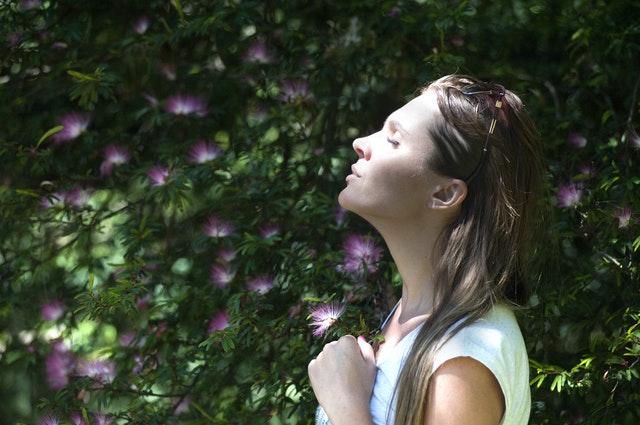
Every February, teacher Sharon Salzberg conducts a wonderful exercise called the Meditation Challenge, based on her book Real Happiness. The intent is to introduce folks to the practice of meditation by incorporating it into their daily lives. This month’s Mindful Minute columns will be based on excerpts from this challenge.
Think about all the internal energy spent endlessly worrying about the past, worrying about the future, berating ourselves for who knows what, blaming others, constantly checking social media, encasing ourselves in unhealthy habits. Now, imagine having all that energy available to us instead.
Concentration is a steadying and focusing of attention that allows us to let go of distractions. When our attention is stabilized, it restores our internal energy. This week we are going to learn techniques for deepening concentration through focusing on the breath.
Some distractions are internal — replaying old mistakes and regrets or nursing past injustices. We focus on things we can’t undo. Or, we focus energy on obsessing about a future that may never happen. Mark Twain’s quote “I’ve been through some terrible things in my life, some of which actually happened” is so true. And external distractions abound too — the tug of work vs. home and the onslaught of the 24/7 news cycle.
Learning — or relearning — how to concentrate is a real challenge. Linda Stone, a former Apple exec, coined the term continuous partial attention. It may sound familiar — simple multitasking. It used to be motivated by the desire to be more productive and create more free time for family and friends. Now it involves an artificial sense of constant crisis, of living in a world that is always on. This leads to feeling overwhelmed and unfulfilled. We often feel uncentered.
Each of us is a combination of many traits, abilities, and drives. When our attention is turned inward, all of those “parts” work in unison. When we are distracted, they don’t, and that’s when we feel off or uncentered. By training our attention, meditation allows us to feel that essential unity. This week’s focus will be on improving concentration by aiming your attention on your breath. We choose the breath because breathing is something you do naturally — there’s no intentional effort. It’s also an object to focus on that is always present.
During this week, make a commitment to yourself to sit for 10 minutes once or twice in the week. (OK – maybe even five minutes). Put it on your calendar, write it down, decide where it will fit in your day and commit to it. When you are ready, sit comfortably in a chair or on a pillow. Make sure you will not have any external distractions. (No checking your phone!). Read through the following meditation a couple times and then give it a try:
Gently close your eyes. Just let your muscles relax.
Thoughts and emotions will come up and vie for your attention, but we will practice repeatedly noticing and letting them go, and then returning to your breath.
Purposefully take 3-4 deep breaths, feeling the air as it enters your nostrils, filling your chest, and flows out again. Then let your breath fall into a natural rhythm.
Just feel the breath as it happens, without trying to change it.
Notice where you feel your breath most strongly. Gently rest your attention on just that area.
Become aware of the sensations there. You may notice the breath is cooler when it comes in and warmer when it goes out. You don’t need to name the sensations – simply feel them.
Let your attention rest on the feeling of the natural breath, one breath at a time. Simply be aware of it, one breath at a time.
Thoughts may try to distract you – that’s normal. Just acknowledge they are there and let them go. No need to chase them. Once you’ve noticed whatever is trying to get your attention, there’s no need to do anything about it. You are just breathing.
Realize that once you are aware you’ve been distracted, that’s a magic moment — it’s a chance to try a new response. Instead of giving up in frustration, thank yourself for recognizing what is happening and return to your breath.
Continue to follow your breath – starting over when you are distracted — until you have come to the end of your allotted time for meditation. When you are ready, gently open your eyes.
Try to bring some of the qualities of concentration you just experienced — presence, calm observation, willingness to start over – to your next activity at work or with family.
If you do these exercises, we would love to hear how they went at shorelines@northshorebank.com. Thanks for reading! —Pat Ingelse, AVP, PMP
